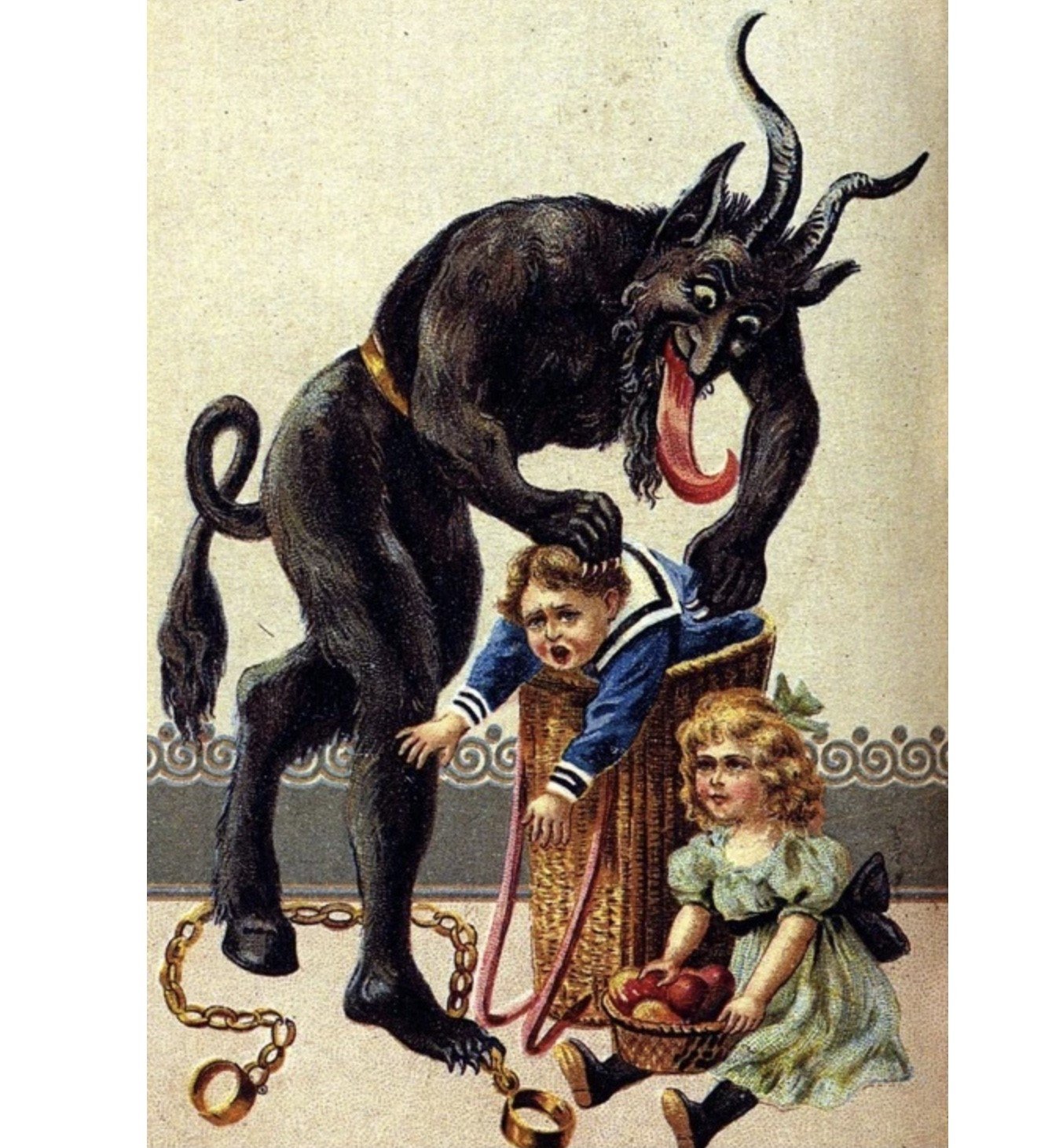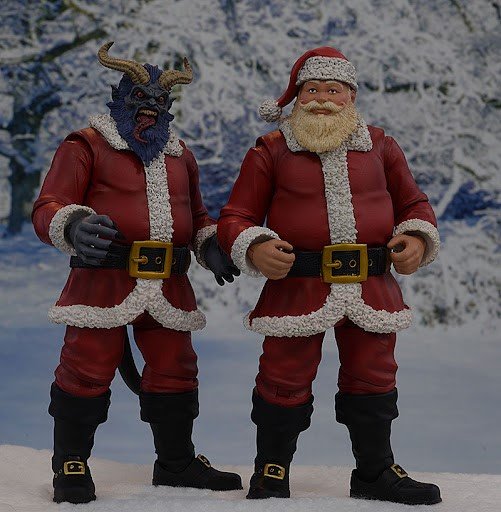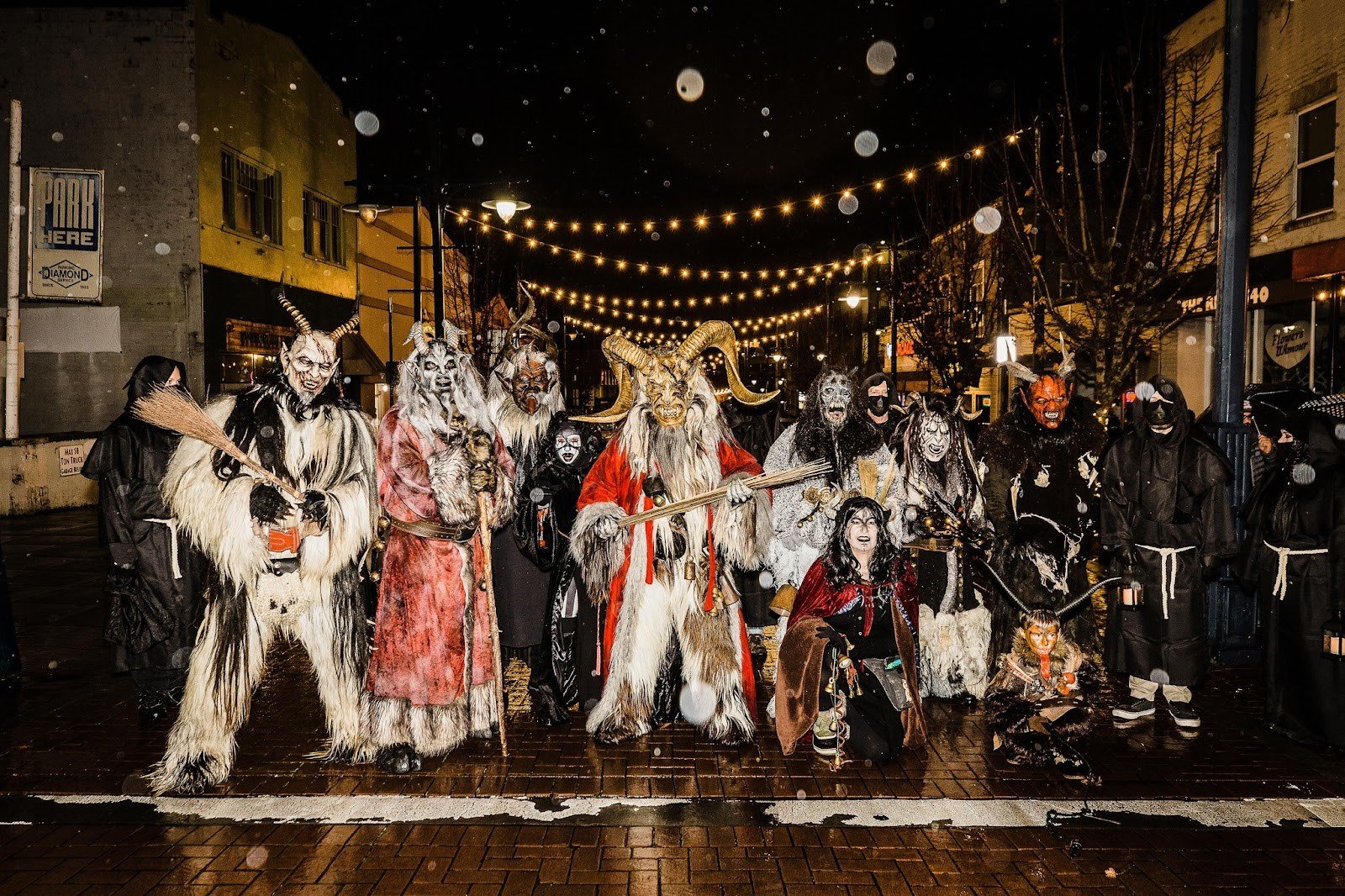Krampusnacht and Winter Solstice
Who is this Krampus creature and how is he related to the winter solstice and paganism?
Photo from: WordsandHerbswordpress.com
Krampus is known as the half-man, half-goat creature that comes around every year to chase naughty children and maybe even drag them to his underworld lair. He was thought to have been an integral part of pagan rituals during the winter solstice. Legends say he is the son of Hel, who is the Norse god of the underworld. Others believe Krampus originated from the Horned God of Witches, a deity found in Wicca and other forms of neopaganism. The Horned God is associated with wilderness, nature and hunting. He is depicted with a beast’s head and horns which symbolizes the union of the divine and the animal.
Krampus is associated with the winter solstice because the solstice marks a time of darkness and a turning point toward the return of light. Since the winter solstice occurs around December 21st or 22nd and long has been a time of ritual and celebration, often linked to the cycles of nature and the battle between light and dark. Krampus, as a figure , embodies the dark side of the winter season which fits into ancient traditions, where fears and the supernatural were used to explain the harshness of the season. The cold, long nights and the struggle for survival during winter months were fertile ground for folklore figures such as Krampus, who could embody the terrifying aspects of winter. This mischievous character also serves as a reminder of the long-standing human connection to the changing seasons and the balance between light and dark.
During the spread of Christianity, Krampus was associated with Christmas even though the Catholic Church tried to have any celebrations with him banned due to his strong resemblance to the devil. Throughout Krampus’s history, there have been several attempts to thwart the Christmas devil, but Krampus has always prevailed.
Photo from: mcwtoys.com
Both Krampus and St. Nicholas is said to visit on the evening of December 5th (Krampusnacht). St. Nicholas rewards the well-behaved children by leaving gifts. While, Krampus beats children who misbehave with branches and sticks. Several stories mention Krampus eating children or bringing them to hell. On December 6th (St. Nicholas Day), well-behaved children wake to see their presents or attend to their injuries.
Krampus comes from folklore in Austria’s Alpine region and some parts of Germany. Krampus has been terrifying children and entertaining adults for hundreds of years. Krampus night or Krampusnacht is when adults wear Krampus costumes to frighten children. Children may have seen Krampus running through the streets during what is known as Krampus run or Krampuslauf. The Krampuslauf was more a way for grownups to blow off steam and get drunk dressed as the scary and fearsome goatman. This Krampus run tradition still continues to this day.
Photo from: Facebook- Krampus in Bremerton
In the later 20th century despite efforts to maintain cultural heritage, Krampus runs have become more popular in Austria and Germany. Krampus has also been celebrated internationally with the creature’s increased appeal evidenced by the myriad of horror movies. Some claim that the increasing popularity of Krampus was a direct reaction to the over-commercialization of Christmas. Currently, in the U.S., cities like Los Angeles, San Francisco, Portland and New Orleans hold their own Krampus festivities each year.
-----
Written by Rachel DeMicco



